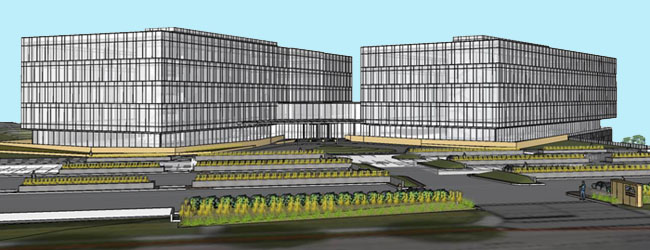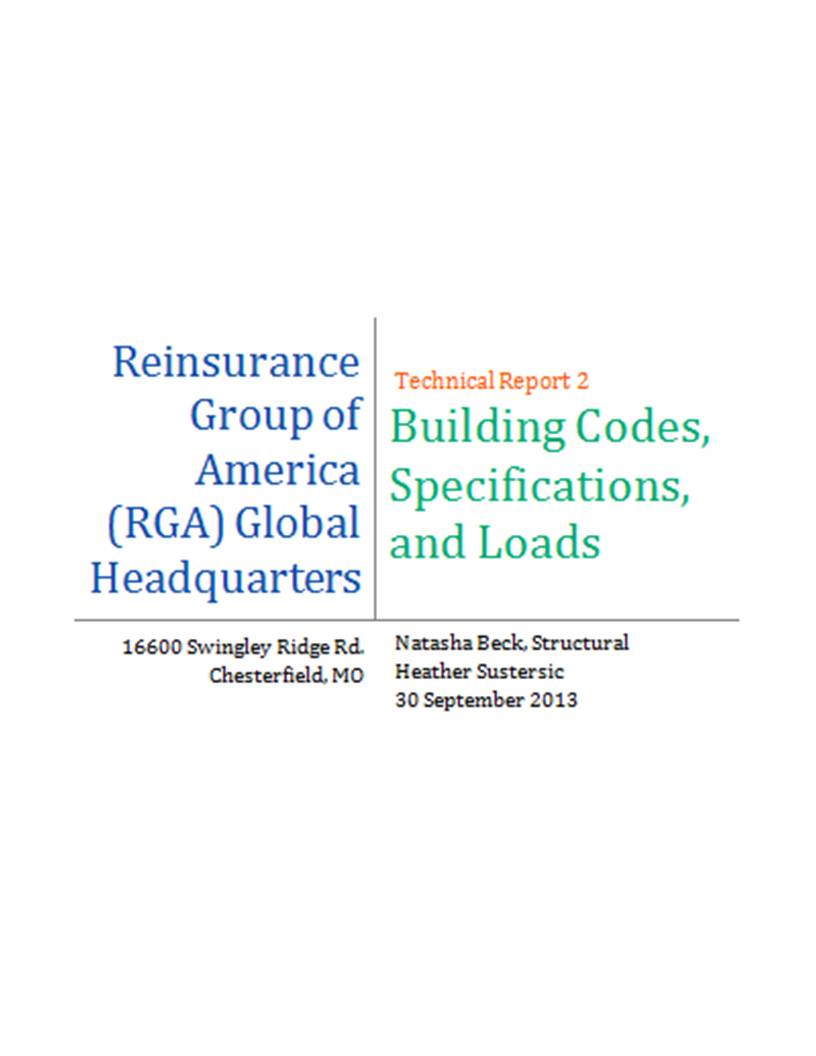REINSURANCE GROUP OF AMERICA (RGA) GLOBAL HEADQUARTERS |
|
16600 Swingley Ridge Road |
 |
Chesterfield, MO |
|
Natasha Beck |
|
Structural |
|
| Home |
|---|
| Student Bio |
| Building Statistics |
| Abstract |
| Technical Reports |
| Research |
| Proposal |
| Final Presentation |
| Final Report |
| Reflection |
| e-Studio Site |
Technical Report 1: Existing Conditions
Technical Report 1 gives an overview of the existing conditions of RGA Global Headquarters. It describes structural components of the building such as floor and roof framing, the lateral system, the foundation system, bracing elements, secondary structural systems, load paths, and structural support for the facade system. Finally, it describes all of these components work together to form the structural system.
Technical Report 2 defines and determines the structural design loads of the RGA Global Headquarters project including identifying building codes, specifications and other documents relevant to the design. This report also includes gravity, snow, wind, and seismic load determination.
Technical Report 3: Typical Member Spot Checks for Gravity Loads and Alternate Systems Typical Bay Design Study
Technical Report 3 evaluates a typical bay of the existing design and compares three alternate bay designs. The original system, composite steel, is the benchmark which a floor joist system, hollow core plank on steel, and a one-way slab sytem are compared.
